Find Help
More Items From Ergsy search
-
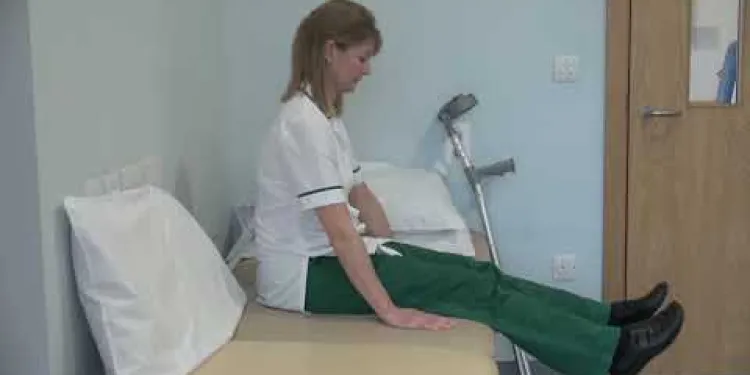
Hip replacement - getting into bed
Relevance: 100%
-
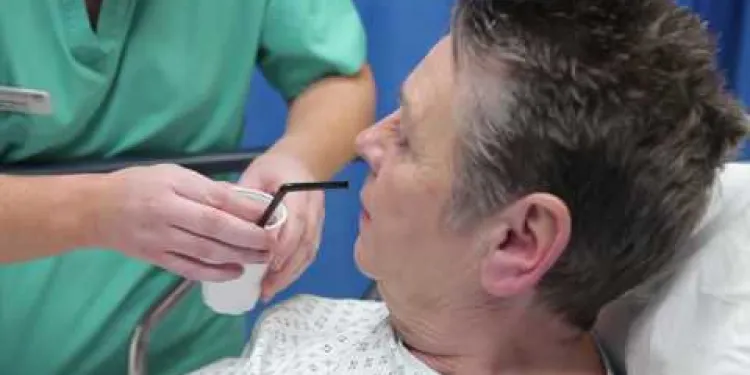
Hip replacement
Relevance: 63%
-

What is a hip replacement?
Relevance: 61%
-
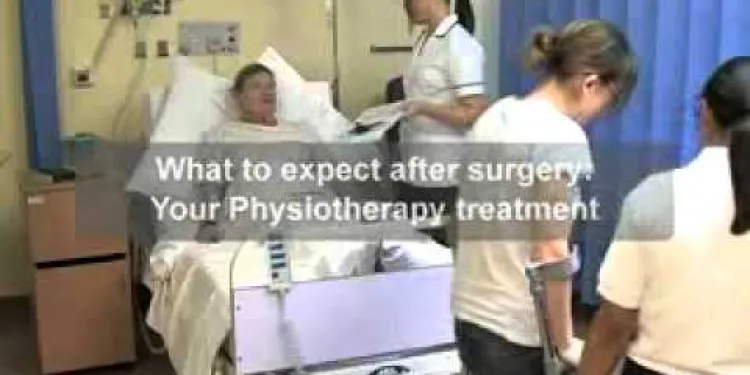
Total hip replacement
Relevance: 59%
-

Total Hip Replacement
Relevance: 59%
-

Do I need a Hip Replacement?
Relevance: 59%
-

Total hip replacement at Northumbria Healthcare
Relevance: 54%
-

Can both hips be replaced at the same time?
Relevance: 53%
-

How long does a hip replacement surgery take?
Relevance: 53%
-

What is minimally invasive hip replacement surgery?
Relevance: 53%
-

What is the recovery time for a hip replacement?
Relevance: 52%
-

How much does hip replacement surgery cost in the UK?
Relevance: 52%
-
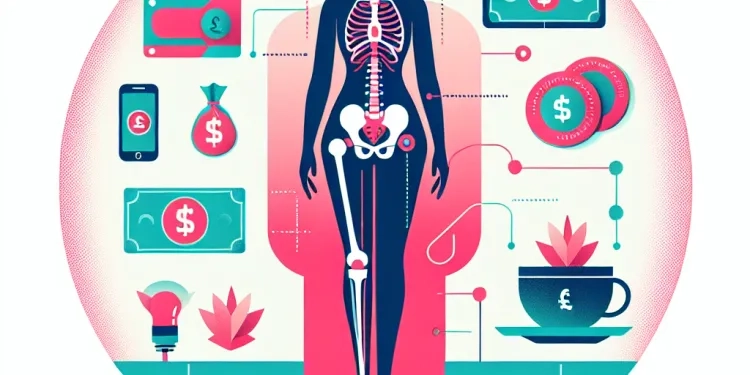
What are the risks associated with hip replacement surgery?
Relevance: 52%
-

Will I need physical therapy after a hip replacement?
Relevance: 51%
-

How do I prepare for hip replacement surgery?
Relevance: 50%
-

What type of anaesthesia is used during hip replacement surgery?
Relevance: 48%
-

Having a hip replacement - Part Two: Recovery
Relevance: 45%
-

Can I get rid of bed bugs myself?
Relevance: 43%
-

Will disposing of my mattress get rid of bed bugs?
Relevance: 42%
-

Osteoarthritis of the Hip
Relevance: 42%
-

Same day discharge for NHS Golden Jubilee’s hip replacement patients
Relevance: 42%
-

Your anaesthetic choices for your planned hip or knee replacement surgery at the RUH.
Relevance: 40%
-

A journey to hip surgery
Relevance: 39%
-
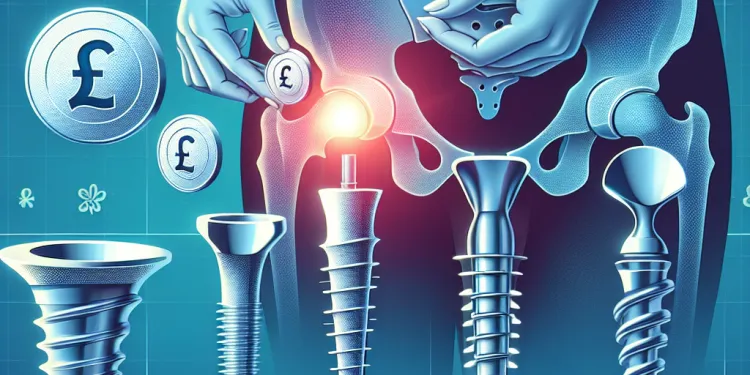
Are there different types of hip implants?
Relevance: 39%
-

Osteoarthritis of the Hip
Relevance: 39%
-

How long do hip replacement implants last?
Relevance: 38%
-
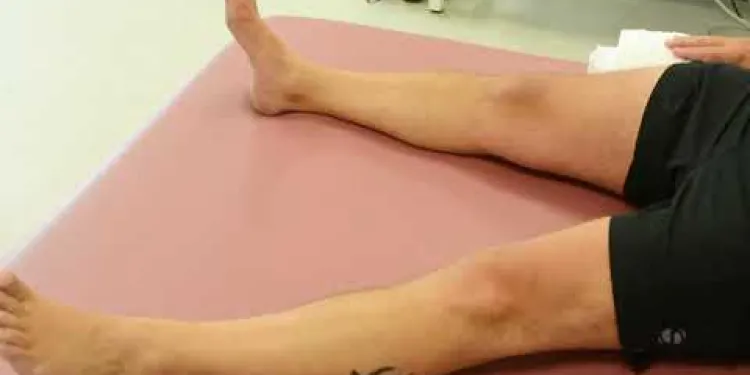
Joint School - Hip Exercises
Relevance: 36%
-

Do bed bugs only live in beds?
Relevance: 36%
-

Will I be able to return to normal activities after hip replacement?
Relevance: 35%
-

Bed Bugs / bedbugs
Relevance: 34%
-

What are bed bugs?
Relevance: 33%
-

Are bed bugs dangerous?
Relevance: 33%
-
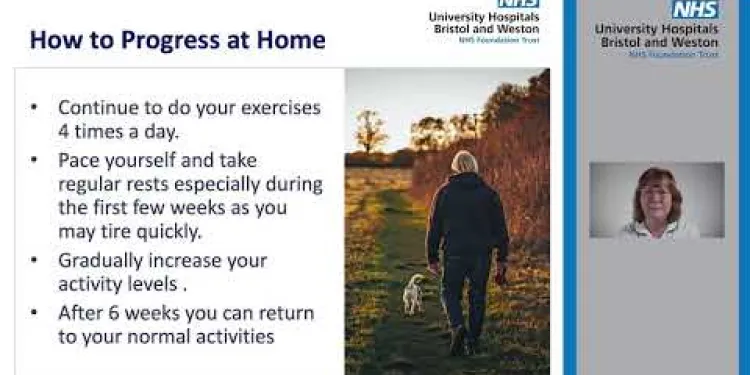
Enhanced Recovery - Hip
Relevance: 31%
-

What are the signs of a bed bug infestation?
Relevance: 31%
-

Why are bed bugs so difficult to eliminate?
Relevance: 30%
-

Are there any natural remedies for bed bugs?
Relevance: 30%
-

How do bed bugs enter my home?
Relevance: 30%
-
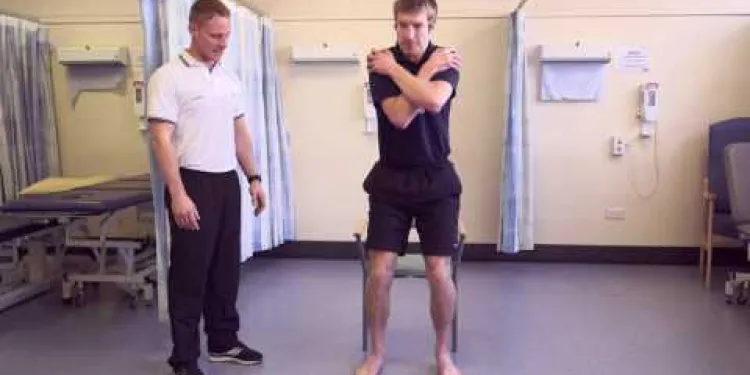
Exercises to help your lateral hip pain
Relevance: 30%
-
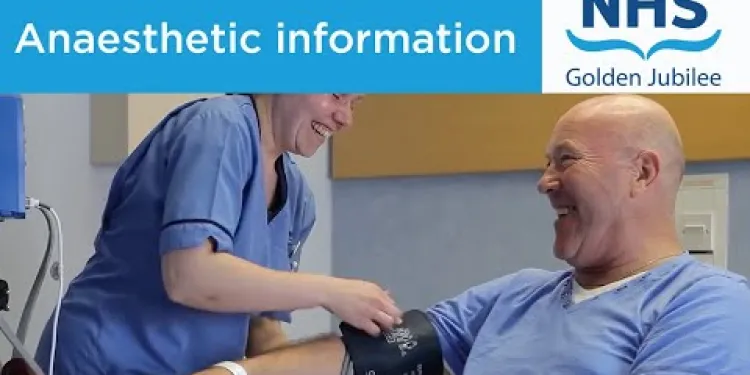
Knee replacement
Relevance: 30%
-

What can I expect during the first few weeks after hip replacement surgery?
Relevance: 29%
Hip Replacement - Getting Into Bed
Introduction
Recovering from a hip replacement surgery involves various changes in your daily routine, including how you get in and out of bed. The process can be daunting, especially during the initial recovery phase. This guide is tailored for residents in the United Kingdom and provides essential tips for getting into bed safely after a hip replacement.
Preparing Your Bed
Before attempting to get into bed, make sure your bed is prepared to accommodate your needs. A bed with an appropriate height is crucial; ideally, it should be set so that your feet can touch the floor when you sit at the edge. Consider using a firm mattress to provide better support. Additionally, ensure that any necessary items like medication, water, and your phone are within arm's reach.
Using Assistive Devices
Various assistive devices can ease the process of getting into bed. Devices such as bed rails, leg lifters, and grab bars can offer additional support. It's also advisable to keep a walker or crutches close to the bed to aid mobility, as instructed by your physiotherapist or healthcare provider.
Step-by-Step Guide for Getting Into Bed
Follow these steps to get into bed safely:
- Position Yourself: Stand at the side of the bed, with your back to the mattress and hands resting on the bed for support.
- Lower Yourself: Using your arms for support, slowly lower yourself to a sitting position on the edge of the bed. Ensure your operated leg is straight and supported.
- Move Your Legs: Gently slide your bottom backwards towards the centre of the bed while lifting your legs onto the bed. You can use a leg lifter or your hands to assist your operated leg.
- Lie Down: Once your legs are comfortably on the bed, carefully lower your upper body until you are lying flat.
Additional Tips
- Take Your Time: Don't rush the process. Move slowly and deliberately to avoid unnecessary strain on your new hip.
- Follow Restrictions: Adhere to any movement restrictions laid out by your healthcare professional, such as avoiding crossing your legs or bending your hip more than 90 degrees.
- Ask for Help: Don't hesitate to ask for assistance from a caregiver or family member during the initial stages of your recovery.
Conclusion
Post-hip replacement, getting into and out of bed can be challenging, but with proper preparation and the right techniques, it can be managed safely and effectively. Always consult your healthcare provider for personalized advice suited to your recovery needs. By following these guidelines, you can ensure a smoother and safer transition during your healing process.
Hip Replacement - Getting Into Bed
Introduction
After you have hip replacement surgery, you may need to change how you do some things, like getting in and out of bed. This can seem hard at first. This guide is for people in the United Kingdom and gives important tips on getting into bed safely after a hip replacement.
Preparing Your Bed
Before getting into bed, make sure your bed is ready for you. Your bed should be high enough so your feet touch the floor when you sit on the edge. A firm mattress can help support you better. Keep things you need, like medicine, water, and your phone, close by.
Using Assistive Devices
There are tools that can help you get into bed more easily. Bed rails, leg lifters, and grab bars can give you extra support. Keep a walker or crutches near the bed as your therapist or doctor tells you.
Step-by-Step Guide for Getting Into Bed
Here are the steps to get into bed safely:
- Position Yourself: Stand next to your bed with your back to the mattress. Put your hands on the bed for support.
- Lower Yourself: Use your arms to slowly sit on the edge of the bed. Keep your operated leg straight and supported.
- Move Your Legs: Slide your backside towards the middle of the bed while lifting your legs onto it. Use a leg lifter or your hands to help move your operated leg.
- Lie Down: Once your legs are on the bed, gently lower your upper body until you are lying flat.
Additional Tips
- Take Your Time: Don't rush. Move slowly to avoid hurting your new hip.
- Follow Restrictions: Listen to your healthcare professional about what movements to avoid, like not crossing your legs or bending your hip too much.
- Ask for Help: It's okay to ask a caregiver or family member for help when you are just starting to recover.
Conclusion
Getting into and out of bed after a hip replacement can be hard, but with the right preparation and skills, it can be done safely. Always check with your healthcare provider for advice that's right for you. Following these guidelines can make your recovery easier and safer.
Frequently Asked Questions
How soon after hip replacement surgery can I get into bed?
You can typically get into bed the same day as your surgery, but you will need assistance and guidance from healthcare professionals.
What is the best way to get into bed after hip replacement surgery?
The best way is to sit on the edge of the bed, slide your bottom backward, and use your arms to help lift and pivot your legs onto the bed while keeping your operated leg straight.
Can I sleep on my side after hip replacement surgery?
You can sleep on your side, but only on the non-operated side with a pillow between your legs to keep your hip in the right position.
How can I make getting into bed easier after my hip replacement?
Use assistive devices such as a bed rail, leg lifter, or a sturdy chair beside your bed to aid in the process.
Should I use a specific type of mattress after hip replacement surgery?
A firm mattress is generally recommended to provide adequate support and make it easier to move in and out of bed.
How long will I need help getting into bed after hip replacement?
You may need help for the first few days or weeks, depending on your recovery progress and mobility.
Is it safe to use a recliner instead of a bed after hip replacement?
A recliner can be used temporarily, but it's important to ensure it allows you to maintain proper hip precautions and doesn't compromise your recovery.
Can I use a heating pad or ice pack while in bed after hip replacement?
Yes, but consult with your doctor or physical therapist to determine the appropriate use and placement.
What should I avoid doing when getting into bed after a hip replacement?
Avoid bending your hip past 90 degrees, twisting your leg, or crossing your legs while getting into bed.
How high should my bed be after hip replacement surgery?
Your bed should be high enough so that you can sit with your feet flat on the floor and your hips slightly higher than your knees.
Can I use an adjustable bed base after a hip replacement?
Yes, an adjustable bed base can be beneficial and allow you to find a comfortable and supportive position.
How do I ensure my bed is safe after a hip replacement?
Remove any loose rugs, ensure the bed is stable, and keep necessary items within reach to prevent falling or overreaching.
Can I sleep with a pillow under my knees after hip replacement?
Yes, placing a pillow under your knees can provide support and comfort, but always follow specific instructions from your healthcare provider.
What should I do if I experience pain when getting into bed after hip replacement?
Contact your healthcare provider if you experience significant pain as they might need to adjust your pain management or review your recovery progress.
Can I take a nap during the day after my hip replacement?
Yes, taking short naps can aid in recovery, but ensure you follow proper techniques for getting in and out of bed.
When can I go to bed after hip surgery?
After your surgery, you can usually get into bed on the same day. But you will need help from doctors and nurses.
How can I get into bed after hip surgery?
If you had a hip surgery, getting into bed can be hard. Here are some simple tips to help:
- Use a firm bed: A firm bed is easier to get in and out of.
- Sit on the edge: Sit on the bed's edge first.
- Use your hands: Use your hands to support yourself.
- Lift your legs slowly: Lift your legs onto the bed one at a time. Move slowly.
- Keep a pillow: A pillow between your legs can help keep your hip safe.
If you find it hard, ask a helper or use a bed rail. A bed rail can help you feel safe. Always follow your doctor's advice.
The best way to get into bed is like this:
1. First, sit on the edge of the bed.
2. Slide your bottom back onto the bed.
3. Use your arms to help lift your legs onto the bed.
4. Keep your operated leg straight.
If you need help, you can try using a bed rail or ask someone to support you.
Can I sleep on my side after a new hip surgery?
If you just had hip surgery, ask your doctor about the best way to sleep.
Doctors often say it's OK to sleep on your back. But sleeping on your side might be okay after some time.
Here are some tips:
- Use a pillow between your legs when sleeping on your side.
- Talk with your doctor to know when it's safe to sleep on your side.
- Use apps or timers to remind you to change positions.
You can sleep on your side, but only on the side that didn't have surgery. Put a pillow between your legs. This helps keep your hip in the right place.
How can I get into bed more easily after my hip surgery?
Here are some tips to help you get into bed:
- Use a pillow to support your hip.
- Slowly sit on the bed's edge.
- Lift your legs one by one onto the bed.
- Try using a grab bar for support if you need help.
- Ask someone to help if you're finding it tricky.
Some tools can help you:
- Bedside rail for support
- Sock aid to help put on socks
- Reacher tool to pick up items
Your doctor or therapist can give more advice.
Use special tools to help. You can use a bed rail, a leg lifter, or a strong chair next to your bed to help you get up.
Do I need a special mattress after hip surgery?
A firm mattress is a good idea. It helps your back and makes it easier to move when getting in and out of bed.
How long will I need help getting into bed after hip replacement?
After having a hip replacement, you might need help to get into bed. This can be for a short time or a longer time.
It usually takes a few weeks to get better. Everyone heals differently, so it can be quicker or slower.
To make things easier, you can:
- Ask someone to help you at home.
- Use pillows or cushions for support.
- Follow the doctor's advice for exercises.
You might need some help for the first few days or weeks. It depends on how well you are getting better and how easy it is for you to move around.
Can I use a comfy chair instead of a bed after hip surgery?
If you had hip surgery, you might wonder if you can sleep in a comfy chair instead of a bed. Here are some tips to help:
- Ask Your Doctor: Talk to your doctor to make sure it's okay. They know best about your health. - Comfort and Support: Make sure the chair supports your back and keeps your hip safe. - Use Pillows: Pillows can help you get comfy and keep your hip in the right place. - Have Help Nearby: It's good to have someone around in case you need help getting up.Remember, your doctor can give you the best advice for your needs!
You can use a comfy chair with a footrest for a short time. Make sure it keeps your hips safe and doesn't slow down your getting better.
Can I use a hot pad or ice pack in bed after hip surgery?
If you had hip surgery, you might need help with pain. You can try using a hot pad or ice pack.
Here are some tips:
- Hot pad: Make sure the pad is warm, not too hot. Use it for a short time.
- Ice pack: Wrap it in a cloth. Don’t put it directly on the skin. Use it for a short time too.
It is good to ask your doctor or nurse if it is safe for you.
Using these tools may help you feel better.
Yes, you can. But talk to your doctor or physical therapist first. They will help you use and place it the right way.
What should I not do when I get into bed after hip surgery?
Here are some simple tips to help you:
- Do not cross your legs.
- Do not bend forward too much.
- Do not twist your hip or turn your foot inwards.
You can use these tools to help:
- A stick or grabber to pick things up.
- A raised toilet seat to make sitting easier.
- A cushion to keep your knees apart when sleeping.
Ask someone for help if you are unsure.
Be careful when getting into bed. Don't bend your hip too much. Keep it less than a right angle. Don't twist your leg. Don't cross your legs.
How high should my bed be after hip replacement surgery?
After hip surgery, your bed should be high enough to make it easy for you to get in and out. You might need some extra cushions or a special seat to make it higher. Ask your doctor or therapist what is best for you.
If you need help, tools like bed risers or a raised toilet seat can make things easier. Always try to make sure you can sit and stand up without pain.
Your bed should be high so you can sit with your feet flat on the floor. Your hips should be a little higher than your knees.
Can I use a bed that moves up and down after a hip operation?
If you had a hip operation, you might wonder if you can use a bed that moves. Yes, you can usually use a bed that changes position. These beds can help you get in and out of bed easier.
Tip: Always ask your doctor or nurse what is best for you.
Yes, a bed that you can change is good. It helps you find a comfy and supportive way to sleep.
How can I make sure my bed is safe after a hip replacement?
Here are some tips to help:
- Keep your bed low: Make sure your bed is not too high. You should be able to sit on it with your feet touching the ground.
- Firm mattress: Use a firm and supportive mattress. This helps keep your hip in a good position.
- No clutter: Keep the area around your bed clear of things like slippers and books. This helps you move safely.
- Use a bed rail: A bed rail can help you get in and out of bed safely. Ask someone to help you install it.
Ask a family member or friend to help you with these changes.
Take away any loose rugs. Make sure the bed is steady. Keep things you need close to you so you don’t fall or stretch too far.
After a Hip Operation: Can I Use a Pillow Under My Knees?
If you recently had a hip operation, you might wonder if you can sleep with a pillow under your knees.
Here is some simple advice:
- Ask your doctor for the best way to sleep. They know what is good for you.
- Some people use a special pillow to feel more comfortable.
- Be gentle with your body as it heals.
Support can help you:
- Try using a soft pillow to support your legs.
- Listen to your body. If something hurts, stop doing it.
Yes, you can put a pillow under your knees. This can help you feel more comfortable. But make sure to listen to what your doctor says.
What can I do if it hurts to get into bed after a new hip?
Here is some help:
- Go slow and be careful.
- Ask someone to help you if you need it.
- Try using a pillow to make it comfier.
- Use a stick or helper tool to move your leg.
- If it still hurts, tell a doctor.
If you feel a lot of pain, talk to your doctor. They can help make your pain feel better or check how you are getting better.
Is it okay to sleep during the day after my hip surgery?
You had hip surgery. Now you may feel very tired. This is normal.
It is okay to take a nap if you feel like you need rest.
Remember to follow these tips:
- Use pillows to keep your hip comfortable.
- Set an alarm to wake up after a short nap, like 20-30 minutes. This helps you sleep well at night.
- If you have any questions, ask your doctor or nurse.
Yes, short naps can help you feel better. Make sure you get in and out of bed the right way.
Useful Links
- Ergsy carfully checks the information in the videos we provide here.
- Videos shown by Youtube after a video has completed, have NOT been reviewed by ERGSY.
- To view, click the arrow in centre of video.
- Most of the videos you find here will have subtitles and/or closed captions available.
- You may need to turn these on, and choose your preferred language.
- Go to the video you'd like to watch.
- If closed captions (CC) are available, settings will be visible on the bottom right of the video player.
- To turn on Captions, click settings .
- To turn off Captions, click settings again.
More Items From Ergsy search
-

Hip replacement - getting into bed
Relevance: 100%
-

Hip replacement
Relevance: 63%
-

What is a hip replacement?
Relevance: 61%
-

Total hip replacement
Relevance: 59%
-

Total Hip Replacement
Relevance: 59%
-

Do I need a Hip Replacement?
Relevance: 59%
-

Total hip replacement at Northumbria Healthcare
Relevance: 54%
-

Can both hips be replaced at the same time?
Relevance: 53%
-

How long does a hip replacement surgery take?
Relevance: 53%
-

What is minimally invasive hip replacement surgery?
Relevance: 53%
-

What is the recovery time for a hip replacement?
Relevance: 52%
-

How much does hip replacement surgery cost in the UK?
Relevance: 52%
-

What are the risks associated with hip replacement surgery?
Relevance: 52%
-

Will I need physical therapy after a hip replacement?
Relevance: 51%
-

How do I prepare for hip replacement surgery?
Relevance: 50%
-

What type of anaesthesia is used during hip replacement surgery?
Relevance: 48%
-

Having a hip replacement - Part Two: Recovery
Relevance: 45%
-

Can I get rid of bed bugs myself?
Relevance: 43%
-

Will disposing of my mattress get rid of bed bugs?
Relevance: 42%
-

Osteoarthritis of the Hip
Relevance: 42%
-

Same day discharge for NHS Golden Jubilee’s hip replacement patients
Relevance: 42%
-

Your anaesthetic choices for your planned hip or knee replacement surgery at the RUH.
Relevance: 40%
-

A journey to hip surgery
Relevance: 39%
-

Are there different types of hip implants?
Relevance: 39%
-

Osteoarthritis of the Hip
Relevance: 39%
-

How long do hip replacement implants last?
Relevance: 38%
-

Joint School - Hip Exercises
Relevance: 36%
-

Do bed bugs only live in beds?
Relevance: 36%
-

Will I be able to return to normal activities after hip replacement?
Relevance: 35%
-

Bed Bugs / bedbugs
Relevance: 34%
-

What are bed bugs?
Relevance: 33%
-

Are bed bugs dangerous?
Relevance: 33%
-

Enhanced Recovery - Hip
Relevance: 31%
-

What are the signs of a bed bug infestation?
Relevance: 31%
-

Why are bed bugs so difficult to eliminate?
Relevance: 30%
-

Are there any natural remedies for bed bugs?
Relevance: 30%
-

How do bed bugs enter my home?
Relevance: 30%
-

Exercises to help your lateral hip pain
Relevance: 30%
-

Knee replacement
Relevance: 30%
-

What can I expect during the first few weeks after hip replacement surgery?
Relevance: 29%


